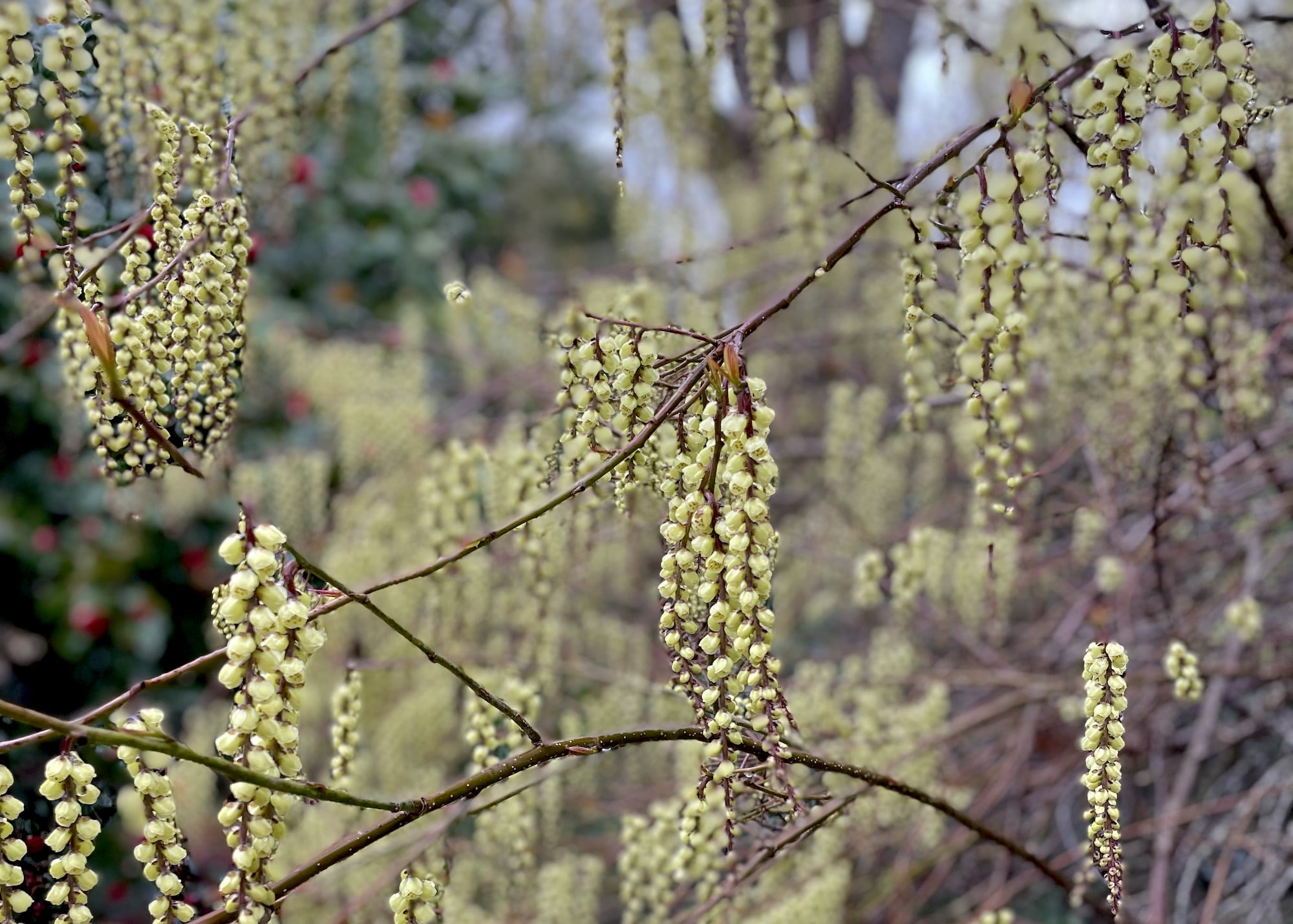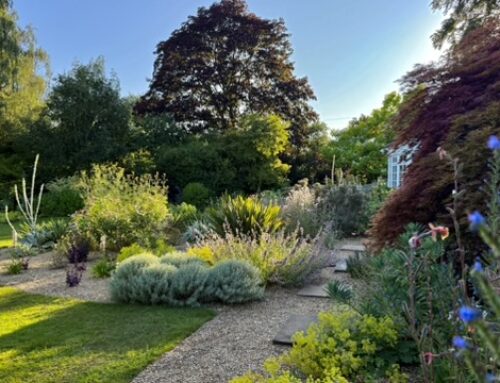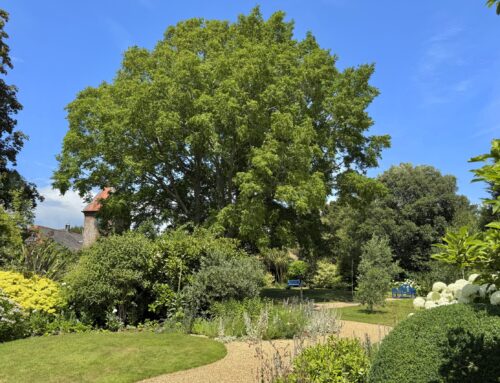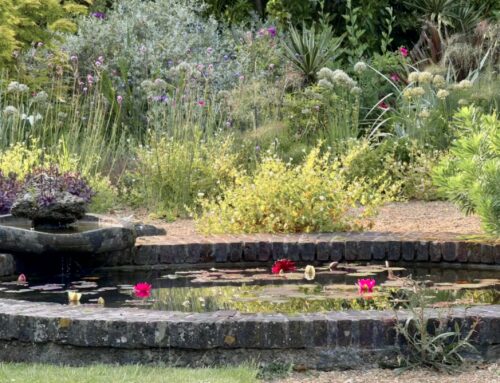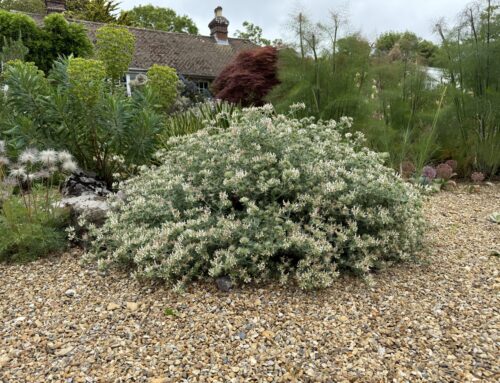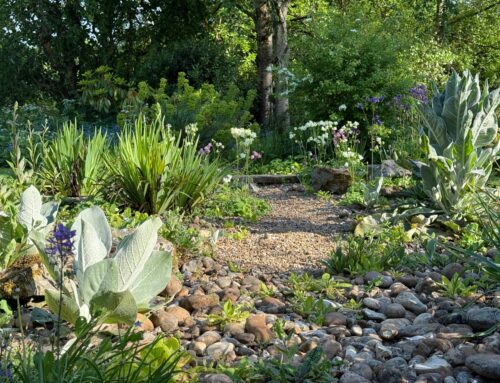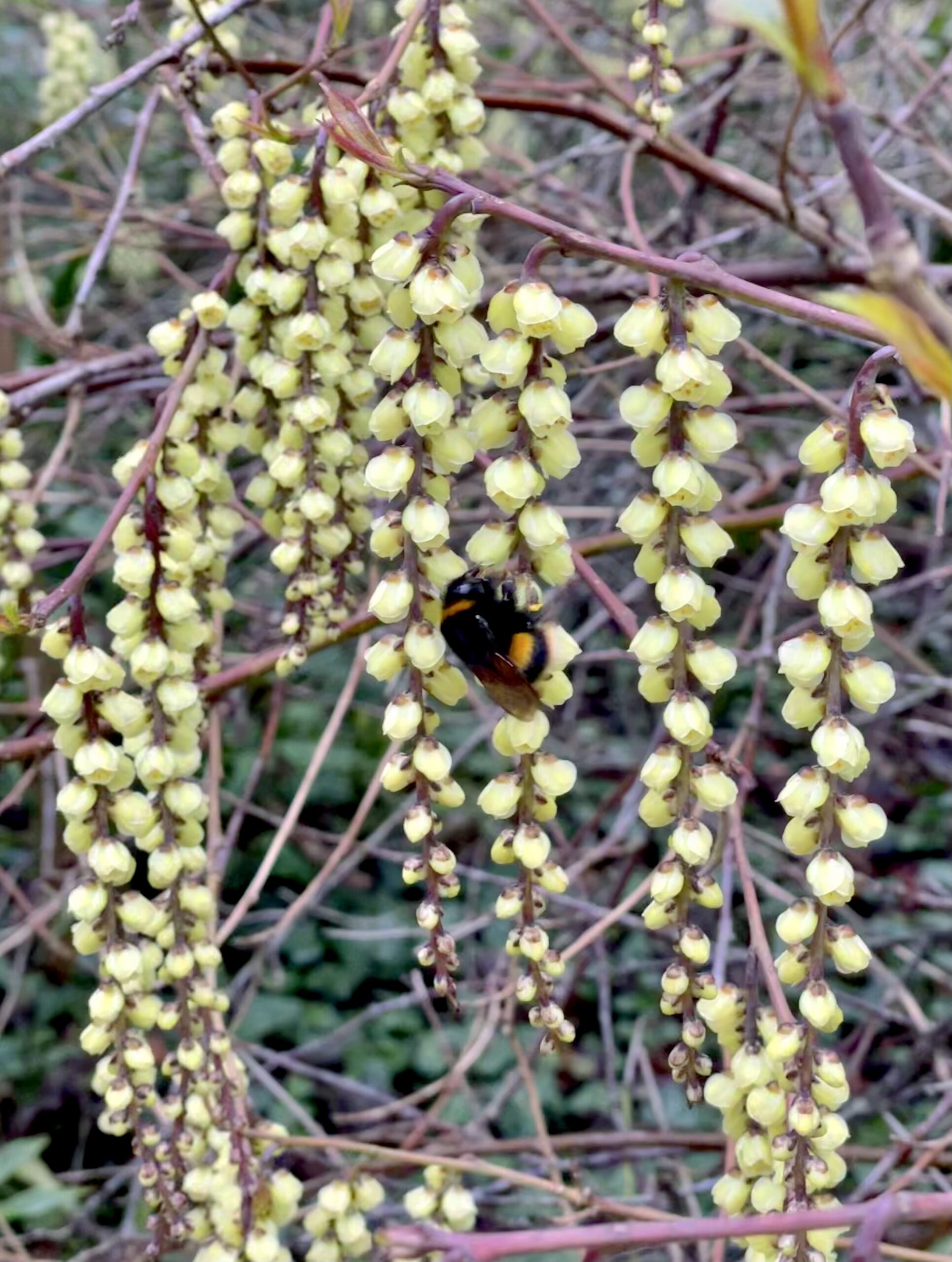 Denmans Garden is filled with many winter-blooming shrubs like Viburnum tinus, camellias, quince, Corylopsis spicata, and witch hazels, but it was Stachyurus praecox, that Mrs. Robinson described as ‘the most elegant of the early spring flowering trees’.[1] Its pale-yellow buds appear in early March, are arrayed on 4-5 inch pendulous racemes that resemble stunning veils of tiny pearls which are especially beautiful when illuminated by early evening sunlight.
Denmans Garden is filled with many winter-blooming shrubs like Viburnum tinus, camellias, quince, Corylopsis spicata, and witch hazels, but it was Stachyurus praecox, that Mrs. Robinson described as ‘the most elegant of the early spring flowering trees’.[1] Its pale-yellow buds appear in early March, are arrayed on 4-5 inch pendulous racemes that resemble stunning veils of tiny pearls which are especially beautiful when illuminated by early evening sunlight.
Native to Japan, this shrub’s Latin name comes from the Greek words ‘stachys’ meaning an ear of corn, and ‘oura’ meaning a tail and referring to the shape of the racemes, while ‘praecox’ means early.
A relatively hardy shrub (it tolerates cold to -15°C), Stachyurus prefers moist, well drained, humus-rich soil and can take both full sun or partial shade. In addition to its March flowers, its fall colour ranges from yellow to orange and its winter architecture is, as Mrs. JH would say, ‘elegant’.
It doesn’t require much pruning to retain its vase-like natural shape — just the removal of crossing shoots – but as it blooms on old wood, it is best to prune just after flowering. It will grow up to 4 metres by 2.5 metres according to many sources, though the one planted by Joyce and Hugh Robinson in 1948 near their front door is quite a bit larger.
There is a second Stachyurus in the Nut Walk that we think might be a different species (possibly S. chinensis), but it only began blooming — and sporadically at that – when we cut back the overgrown shrubs around it a few years ago. It will be easier to figure out which species it is this year as it has many more buds that are about to pop.
[1] Joyce Robinson, Glorious Disarray, 1990, Michael Joseph Ltd., London, p 156

